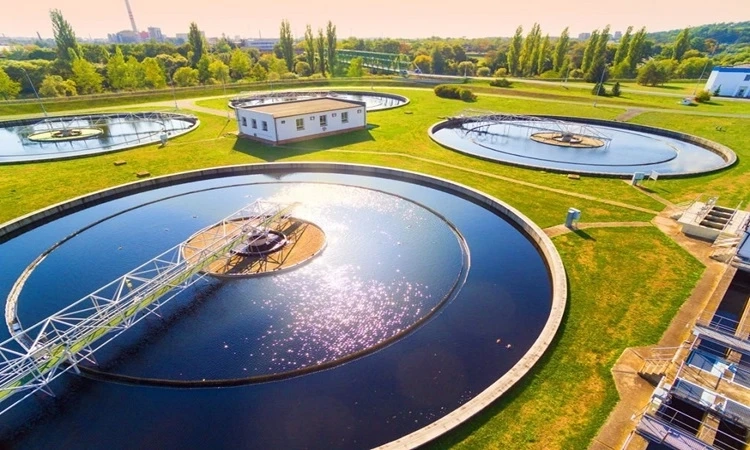In today's industrial landscape, the responsible management of wastewater has become paramount for environmental sustainability. Industrial wastewater, laden with pollutants and contaminants, poses a significant threat to ecosystems if left untreated. To address this challenge, industrial wastewater treatment plants play a pivotal role in purifying water before its discharge into the environment. This article explores the intricate workings of these treatment plants, shedding light on their processes and technologies.
Introduction to Industrial Wastewater Treatment Plants
Industrial wastewater treatment plants are sophisticated facilities designed to remove pollutants and harmful substances from water generated by industrial processes. These plants are equipped with various treatment stages and technologies to ensure the effective removal of contaminants before the treated water is released into natural water bodies or reused for other purposes.
Preliminary TreatmentThe first stage of industrial wastewater treatment involves preliminary treatment, where large solids and debris are removed from the water. This process typically includes screening to separate large objects such as sticks, stones, and plastics. Once the large solids are removed, the water undergoes a grit removal process to eliminate smaller particles like sand and gravel. This preliminary treatment prevents damage to downstream equipment and ensures smoother operation in subsequent treatment stages.
Primary Treatment
Following preliminary treatment, the water enters the primary treatment phase. Here, physical processes such as sedimentation and flotation are employed to further remove suspended solids and organic matter. Sedimentation tanks allow heavy particles to settle at the bottom, forming sludge, while lighter particles float to the surface for removal. The sludge collected during primary treatment undergoes further processing in sludge treatment units within the plant.
Secondary TreatmentAfter primary treatment, the water moves into the secondary treatment stage, where biological processes take center stage. In this phase, microorganisms are introduced to the water to break down organic pollutants through biodegradation. The most common biological treatment method is the activated sludge process, where aeration tanks provide an oxygen-rich environment for bacteria to thrive and consume organic matter. This process significantly reduces biochemical oxygen demand (BOD) and chemical oxygen demand (COD) levels in the water, improving its overall quality.
Tertiary TreatmentWhile secondary treatment effectively reduces organic pollutants, tertiary treatment focuses on further polishing the water to meet specific quality standards. Advanced filtration techniques such as sand filtration, membrane filtration, and granular activated carbon (GAC) adsorption are employed during this stage to remove remaining contaminants, including fine solids, dissolved substances, and trace pollutants. Tertiary treatment plays a crucial role in producing high-quality effluent suitable for discharge or reuse in non-potable applications.
Disinfection and Final TreatmentBefore the treated water is discharged into the environment or reused, it undergoes disinfection to eliminate pathogens and microorganisms. Common disinfection methods include chlorination, ultraviolet (UV) irradiation, and ozonation, each effectively neutralizing harmful bacteria and viruses. Following disinfection, the water may undergo additional treatment steps based on specific regulatory requirements or end-use applications, such as pH adjustment, nutrient removal, or heavy metal removal.
Sludge ManagementThroughout the wastewater treatment process, sludge is generated as a byproduct and requires proper management to prevent environmental contamination. Sludge treatment typically involves dewatering to reduce moisture content, followed by stabilization to minimize odors and pathogens. Depending on the composition of the sludge, various treatment methods such as anaerobic digestion, aerobic digestion, or composting may be employed to further reduce volume and improve handling characteristics.
Environmental Compliance and MonitoringIndustrial wastewater treatment plants adhere to stringent environmental regulations and undergo continuous monitoring to ensure compliance with discharge standards. Monitoring parameters include pH levels, dissolved oxygen, turbidity, nutrient concentrations, and pollutant levels. Regular sampling, analysis, and reporting are essential components of plant operations to demonstrate environmental responsibility and mitigate potential risks to ecosystems and public health.
Conclusion
Trends Share - Industrial wastewater treatment plants are indispensable guardians of our water resources, crucial for curbing the environmental ramifications stemming from industrial operations. These plants serve as pivotal guardians in the relentless battle to preserve our fragile ecosystems and ensure sustainable water management practices. Through a harmonious blend of cutting-edge technologies and meticulous processes, they stand as beacons of environmental stewardship, mitigating the adverse effects of industrial activities on our planet's delicate balance.
KWTPL is the best leading manufacturer of Sewage Treatment Plant, Effluent Treatment Plant & Organic Waste Composter


